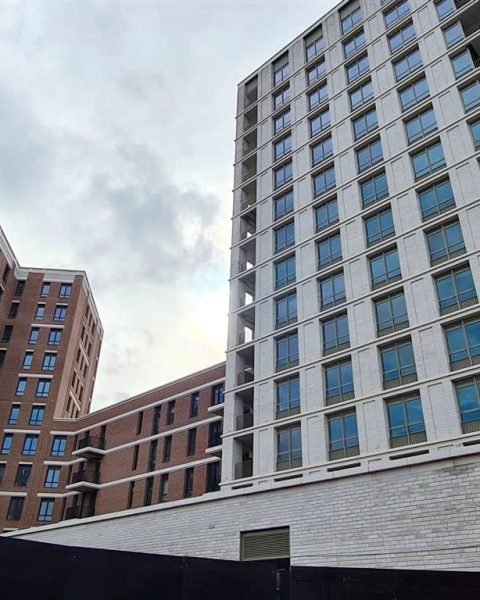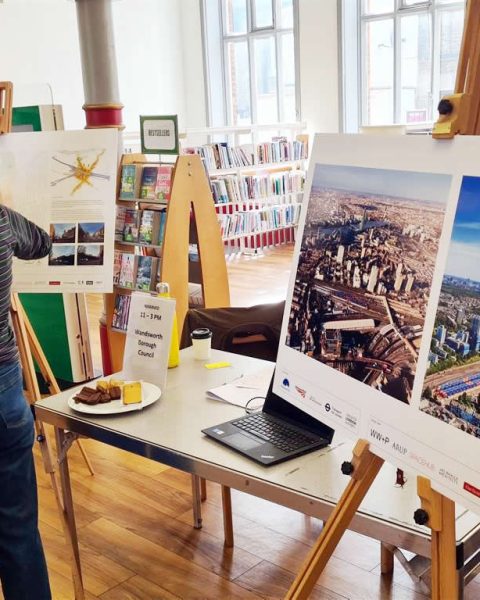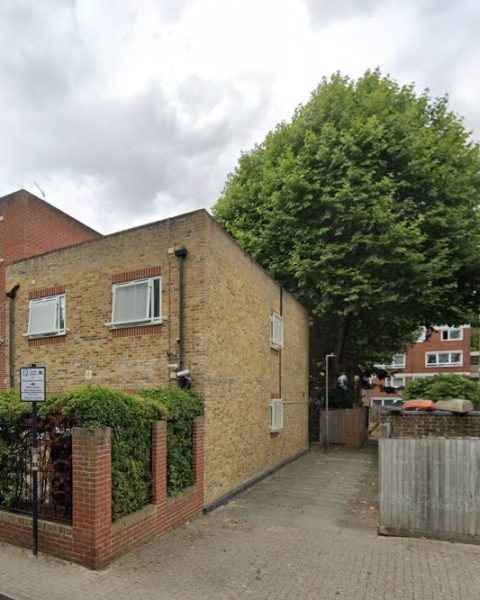Author: Cyril Richert
“You’re joking. NOT ANOTHER ONE?! Oh for God’s sake, I can’t, honestly – I can’t stand this” could have been the response when Wandsworth Council asked again for Societies and Community groups to take part of one of their global planning consultations. However, only 1 month after the Consultation on community involvement submitted in January, we responded again.
The Council has consulted on its draft Local Plan issues for eight weeks starting at the beginning of December (ending February 6th 2019). As expressed by many other groups and Societies at the Planning Forum meeting on January 23rd, it was a very tight deadline for such consultation. However the Battersea Society and the Putney Society managed to submit their contribution at the beginning of February, and CJAG submitted on February 15th.
Both CJAG and the Battersea Society said that it was particularly difficult to be requested to comment with only a digital copy of a complex 76-page document (click HERE to download), without receiving a hard copy that could be more easily flipped through and annotated before drafting a response. The Battersea Society said:
“The lack of hard copies for civic societies who now, and in the past, have spent a considerable amount of time providing input to Wandsworth Council on these and many other documents is an added minor irritant”
and CJAG wrote:
“It is obvious that this process, with the apparent aim of saving little money, is not encouraging a democratic consultation.”
The Local Plan submitted for consultation was made of 98 questions that the Council wished to receive input on. We are displaying some of the comments from the Community groups below, with a link to download the full response each time.
Clapham Junction Action Group [DOWNLOAD]
CJAG submitted 17 pages to respond to most of the questions, but also to comment of some other paragraphs where we found that information was biased and/or misleading. As much as possible we have tried to provide references for all our comments.
In the introduction, we are questioning the necessity of this exercise. We note that:
“the previous vision that has been published by the Council in previous plans for the past 10 years is very different from the reality, to say the least.
A striking example is the current changes in York Road and the Winstanley/York Regeneration Project where the local plan in 2010 was mentioning 5 storeys for places where the Council granted permission for a 20-storey tower in 2018. We could make exactly the same comments for many other major sites: B&Q, Smugglers Way – SW18, max 8 storeys in 2010, granted for 10 to 18 storeys; Homebase, Swandon Way – SW18, max 8 storeys in 2010, granted for up to 17 storeys; South Thames College/Welbeck House/17-27 Garratt Lane, sensitive for tall buildings above 4 storey, currently developed with towers up to 26 storeys; Homebase – York Road labelled as “likely to be inappropriate” for buildings above 8 storeys, and currently under-construction with 6, 7, 9, 11 and 21 storeys; 12-14 Lombard Road labelled as “likely to be inappropriate” for buildings above 8 storeys and now with a tower of 28 storeys (granted less than 5 years after the local plan was accepted)… and we could cover several pages with similar cases.
The gross disregard of the vision set out in the local plan adopted less than 10 years ago has been so profound that it would be cruel to list more examples.
Therefore, more explanation should be made here to justify why there is even any point of drafting a local plan for a period of 15 years, rather than just ticking the box of a mandatory regulation and updating the latest figures implied by other frameworks.“
As you can read further done, the Battersea Society is also commenting on the adequacy of the exercise.
In line with the NPPF (National Planning Policy Framework), CJAG pointed out our previous contribution to the consultation on the draft Statement of Community Involvement (SCI) 2018 especially, the fact that we share years of frustration with many other community groups in the borough, caused by Wandsworth planning process. In an Open letter released in April 2014, The Putney Society, Wandsworth Society, the Clapham Junction Action Group and Friends of Putney Common community group said:
“Many residents have lost faith in the fairness and impartiality of the planning procedures. We have attempted to engage with the Council to get them to follow their own local and also national policies, but to no avail.”
Comments have already been made in our contribution on the SCI 2018 where we said that expressions such as “likely” or “take account” should be avoided unless the policy states specifically the meaning and the consequence (is dismissing 99% of a large number of objections considered appropriate, etc…).
In addition, as we have discussed for nearly 1 year within the planning forum regarding Planning Reforms, an interim review process, with Community groups working jointly with the Council officers, could be implemented aiming at changing inappropriate terms.
You can read all our comments in our contribution, however we have chosen to highlight 2 questions:
- Question 1: Is the existing Local Plan’s vision appropriate in guiding the Local Plan review? If not, what changes should be made?
Response 1: The vision is a list of generic principals that could easily be applied to Birmingham or Liverpool. There is no mention of preserving the local environment by preventing bulky and overbearing buildings and promoting developments in relation to neighbouring property, the street and other public spaces and it should be added. Any new development should consider the effects on people’s day to day lives.
We have deep concerns about the vision stated as “Investment in public services throughout the borough as opportunities arises”. The word “opportunity” in the vision is ambiguous as it could mean that the pressure on services will only be addressed if chance comes (either with funding provided by even more development, or by other ways dropping down from central government). - Question 7&8: Tall buildings (Do you agree with the Council’s current approach to Tall Buildings? …etc)
Response 7: It should clearly specify that schemes consisting of over-development, having a detrimental effect on the local environment and at risk of harming the neighbourhood will be refused. It should be also specified that any building should be considered within the context (and not on its own merit, like in the 4th dimension!), with the aim at minimising effects to neighbouring property, the street and other public spaces. In addition, it should be specifically declared that all justification such as “benefits outweigh harms”, which are personal judgements, must be prevented.
Response 8: The wording appropriate or inappropriate must be removed as this has been proven meaningless for a decade and even developers confirmed that they may ignore it when submitted proposals. The maximum height permitted needs to be strongly enforced and words such as “unlikely to be approved” must be removed. In certain occasion, rules could be defined to accept tall buildings, providing that none of the following criteria is met:
– overdevelopment in comparison of existing neighbourhood,
– harming the neighbourhood and local context
– risks assessed with the cumulative effect of existing and planned development in the neighbourhood.
Battersea Society [DOWNLOAD]
Similarly to CJAG, the Battersea Society submitted 17 pages, answering meticulously all the questions, but also primarily questioning the consultation itself, saying:
“It would have made sense to wait until both the document and our comments could be informed by the current work being undertaken or planned, ie Housing Needs Assessment, Open Space Study, Town Centre and Retail Needs Assessment, Urban Design Study and Local Implementation Plan. We also note that ‘The council is not, at this stage, stating which sites it will be looking to allocate for development or setting out new policies it intends to include in the new Plan’.”
- Question 1: Is the existing Local Plan’s vision appropriate in guiding the Local Plan review? If not, what changes should be made?
Response 1: Inadequate in view of the recent scale of new development and regeneration now taking place in parts of borough e.g. along Battersea Park and York Roads to Wandsworth Bridge, Wandsworth and Putney town centres - Question 7&8: Tall buildings (Do you agree with the Council’s current approach to Tall Buildings? …etc)
Response 7&8: We do not consider the spirit of the approved tall buildings policy has been met. There is constant erosion of the policy through additional storeys justified through the dubious viability assessment process. In addition post approval, through reserved matters applications and amendments, additional storeys have crept in as developers again argue that schemes will not work/dwelling units will not be delivered unless roof heights and number of storeys are varied, usually upwards. We consider that increasingly high densities and tall buildings have been approved at the margins of the areas suggested by the crude areas set out in map 3.
Putney Society [DOWNLOAD]
The Putney Society submitted a pithy response to the Local Plan (condensed 3 pages).
- Question 7&8: Tall buildings (Do you agree with the Council’s current approach to Tall Buildings? …etc)
Response 7&8: Theoretically the current approach is sound, but fails because too many sites are given consent at twice or more the ‘sensitive’ height. This in turn undermines the value of all other policies. Flatted developments in family housing areas were common in the 1960’s and 70’s and seem to have integrated far better than recent high rise blocks in the town centre. - Question 98: Should the new local plan seek to combine all policies into a single document? Please explain your answer
Response 98: The SSAD has turned out to be a waste of time since neither developers nor planning officers seem to take note of what it says, and many sites are not in single ownership.
In theory, Wandsworth Council should produce, within the next months, a full response to the consultation, addressing all points made.
UPDATE 06/05/2019: Contribution from the Wandsworth Society added
Wandsworth Society [DOWNLOAD]
The Wandsworth Society submitted a response (8 pages) later than the other groups, but the response was included into the consultation.
They supported a lot of the comments made by the other Societies and CJAG.
- Question 7&8: Tall buildings (Do you agree with the Council’s current approach to Tall Buildings? …etc)
Response 7&8: We do not agree with the Council’s current approach to Tall Buildings, principally as the Council’s current approach in our area of interest seems to be that applications for tall buildings will be approved irrespective of their negative ‘relationship with the surrounding townscape; both in terms of their immediate setting at ground level and their relationship to open space and other buildings nearby’.We disagree that tall buildings create landmarks, attractive or otherwise. Sudbury House has been located at the centre of Wandsworth town for some fifty years. We believe that in that time nobody has ever found their way to Wandsworth using Sudbury House as a landmark. Neither does it ‘underline aspects of the borough’s character’, or has it acted as a catalyst for regeneration. The recently completed tall buildings, and those under construction, will also fail to be landmarks. They may well redefine an aspect of the borough’s character, but not one we welcome.Tall buildings are not ‘an efficient use of land in line with sustainable objectives’. While there are arguments that concentrations of tall buildings are sustainable, we believe the case is not made. Tall buildings are intrinsically unsustainable. They consume more energy to construct, to function, to maintain and to be demolished than low-rise development.
We believe the Council’s current approach to Tall Buildings, which is to accept and encourage them, should be questioned. We would like to see a reversion to the Stage 2 Urban Design Study which identified heights at which buildings were unlikely to be acceptable and a redefinition of the criteria in policy DMS 4.

















